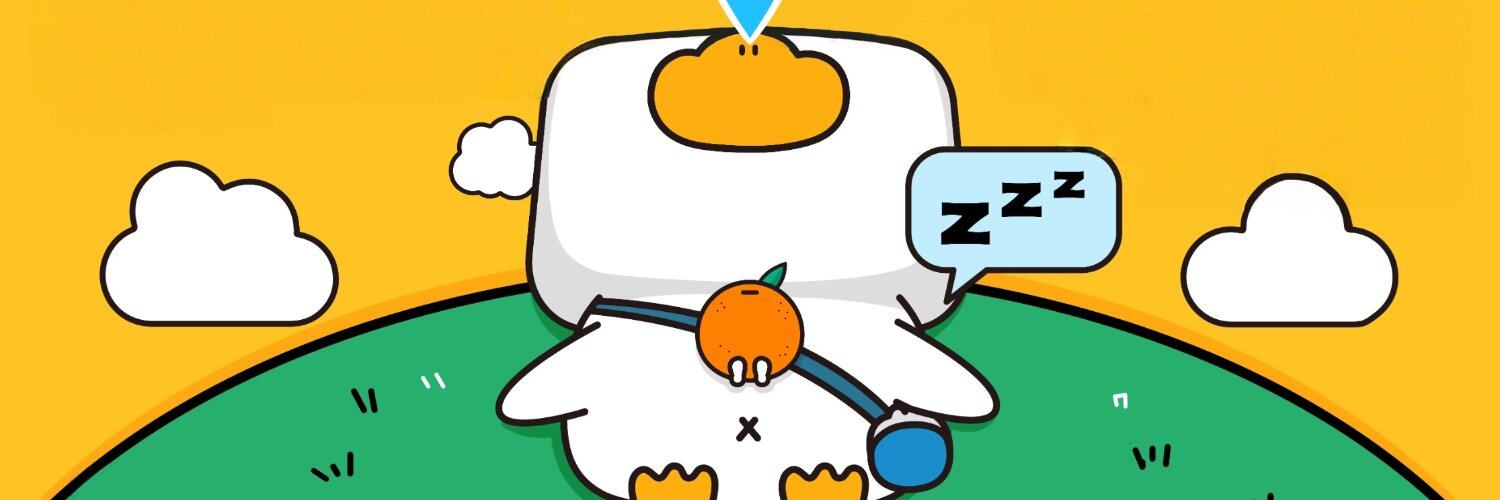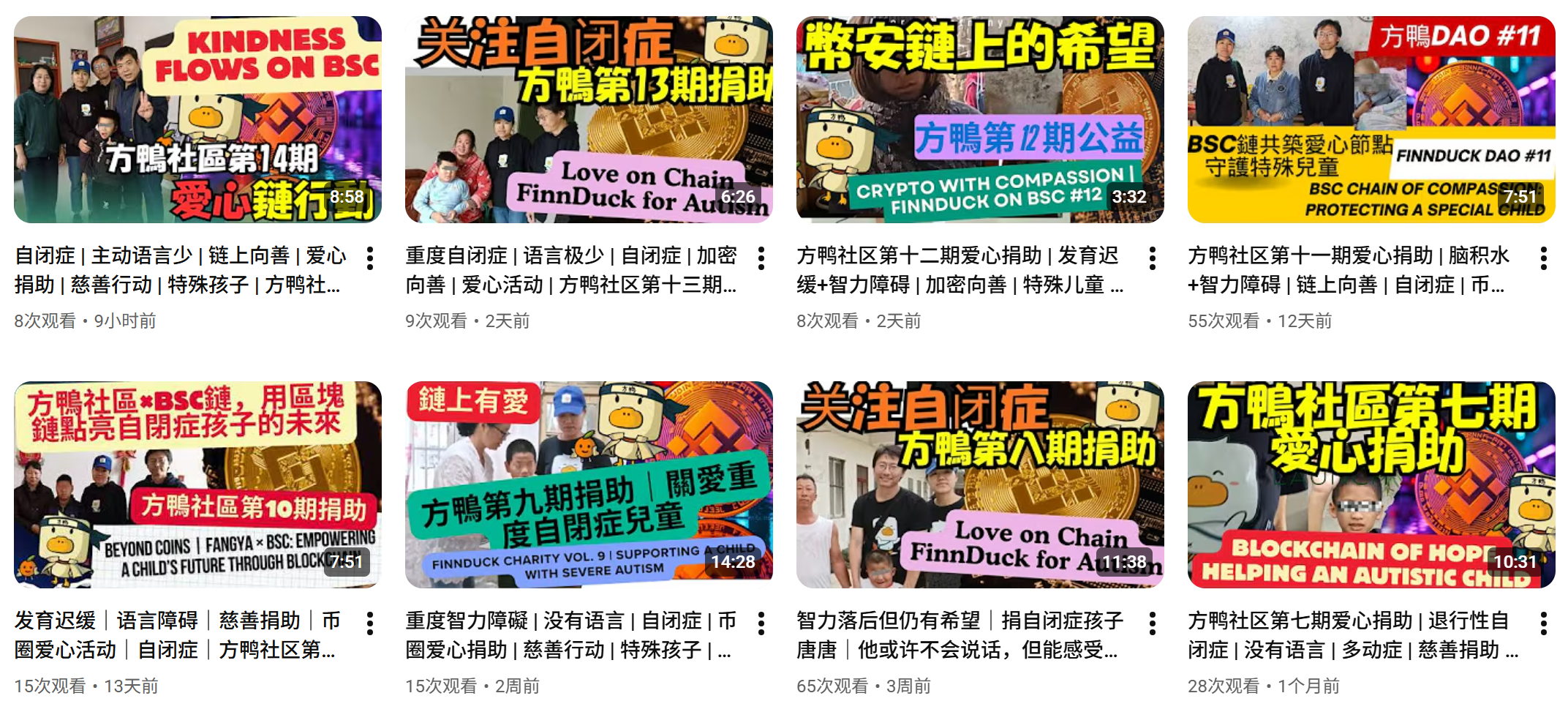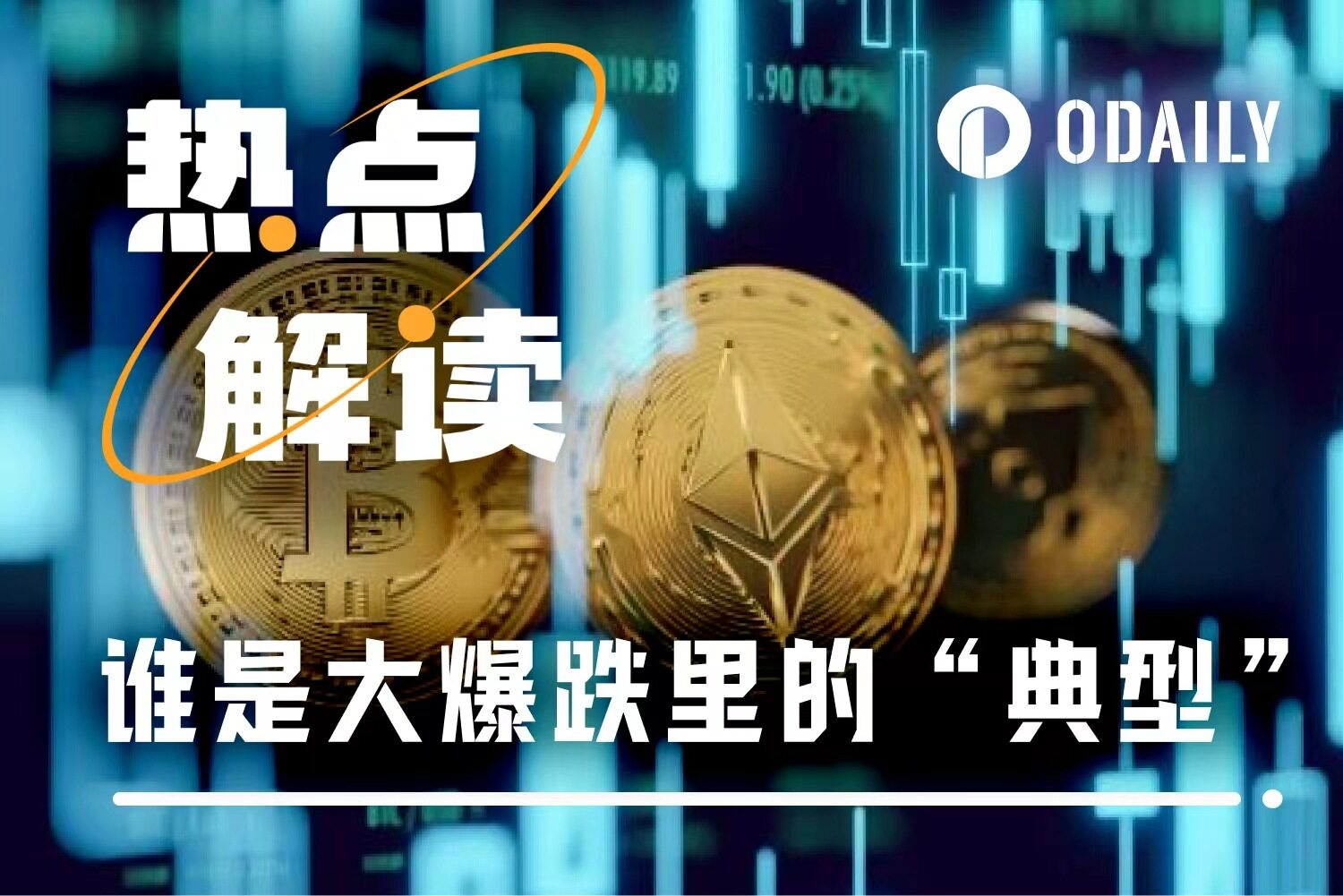Interview with Fang Ya M Ge: In the post-Meme era, how can we pick up the social value beyond hype?
What are the problems with most Meme coins?
Early hype and price manipulation led to retail investors buying in out of fear of missing out (FOMO), while the project team cashed out and left, leaving the community in a mess.
We've had enough of this kind of script.
What $FDUCK wants to do is to airdrop 20% of the transaction tax as rewards to long-term holders.
Let those who truly accompany Fangya and believe in Fangya,
You can earn your own benefits while contributing to charity.
We hope to establish a mechanism that allows long-term investors to obtain excess returns.
This text, which appeared in the "Orange Airdrop Plan" introduction on the official X page of " Fangya Cares for Children with Autism, " seemed particularly "different" in my information feed.
Since last year, Meme has experienced four or five major waves of popularity and countless short-lived trends. Now, its operation is becoming increasingly abstract, clearly defined, and fleeting, constantly attracting newcomers to dream while continuously washing away the hearts of old-timers. Meme has created a group of brave individuals who can quickly identify (and even revise) the rules of the game, but like waves, it has also washed away many more heroes and nameless individuals.
In today's meme market, which is experiencing another downturn, what exactly is FDUCK, which allows users to "gain benefits while contributing to charity"? Is it just hype, a publicity stunt, or something else entirely? Can it be successfully implemented from concept to practice? With this in mind, I had a video interview with M, a representative of the FDUCK community, and the highlights of the interview are summarized below:

Could you please briefly introduce yourself, M? What work experience did you have before joining Fangya?
Hello, I am M_420.69X from X, and you call me Brother M in the community.
In 2021, I moved from Web2 to Web3, where I helped artists engage with the NFT field.
At the end of last year, through participating in artists' NFTs, I truly began to understand the "crypto world," especially the KOL ecosystem.
When did Fangya Community start? What were its earliest intentions and development process?
Fangya was born in mid-September this year.
Fangya Community started in Solana, but in retrospect, it's clear they missed the golden age of the Solana Meme. After becoming CTO, they moved to BSC and joined "Big Brother" (CZ), where the popular Giggle provides English education opportunities for children in Africa. We, on the other hand, prioritize children with autism in China.
(Note: On November 6, CZ posted on the X platform that Giggle Academy currently provides free education to 70,000 children .)
During the ecosystem migration, the old contract is mapped to the new contract, and the new tokens are distributed equally to the original token-holding addresses. At the same time, it has also been renamed from fangya to FDUCK (short for Finn Duck) for greater international appeal and easier understanding by more people.
Fangya, as a community, mainly operates in the Telegram group (1000+ people) and the Chinese and English X (500+ and 400+ fans respectively).
There are many caring people in the community, and members are gradually using their strengths to work together to build the community, thus forming a stronger sense of cohesion.
Why choose to start charitable donations for children with autism?
My partner teaches autistic children, a field that is very expensive, and she offered to teach them for free, which is invaluable.
I personally donated 16,000 yuan to a charity in May 2021, with the note that I hoped to help children with autism.

But perhaps because they couldn't find a more specialized foundation at the time, and felt they had no way of knowing how the donations were being implemented, they came up with the idea of creating a more transparent donation platform by leveraging Web3 technology, governance, and spirit.
What is the specific donation process? What are the differences in the donation experience between Fangya and traditional charity platforms?
In summary, FDUCK relies on taxes for fundraising and donations. For details, please refer to its "warm economics" model:
- Revenue side: 3% transaction tax is automatically collected;
- On the expenditure side: 60% of tax revenue is donated to charity + 20% is used for token buybacks, burning, and airdrop incentives + 20% of tax revenue is used for community operations and volunteer salaries;
- Governance: Community co-governance, regular meetings for voting, and all fund usage details are recorded, transparent and publicly available, and can be directly viewed.
To ensure compliance, the Fangya Autism Children's Foundation delivers donations to the recipients through a special fund it partners with.
In terms of starting point and philosophy, Fangya is no different from other public welfare platforms; donors are free to choose. However, in terms of transparency, we have made our backend panel public, which includes a series of information such as donation schedules, anonymized recipient information and donor nicknames, community donation and expenditure details, and community wallet addresses.

On this webpage, anyone can clearly see the progress and where the funds are going. Donors can also add messages to specific recipients, making it more responsive.
Another source of transparency is Fang Ya's YouTube channel , which includes videos of community visits to families with autistic children.

What is Fangya's current actual revenue? When was the last donation? How can it maintain its transaction tax revenue in the long term?
In early October, FDUCK's market capitalization rose from $30,000 to $50,000, and has now exceeded $400,000, with total revenue around 37 BNB.
The most recent donation was made on November 6th, after Fang Ya visited a family with autistic children in Chongqing; the next donation is planned for more than a dozen autistic children in Shanxi.
On the Fangya Community's public webpage, it can be seen that a kind-hearted person nicknamed "Squirrel Knight" donated 1,000 yuan to Chongqing Family No. 6, which is very transparent.
Fang Ya hopes to start this project immediately and continue doing it for a long time.
How to develop a donation plan? What are the community governance processes?
Fangya is still in its early stages. Currently, it holds weekly governance meetings to discuss various issues such as compliance paths, donation schedules, reward mechanisms, and oversight mechanisms, and is gradually improving and standardizing its operations.
Technically, we use a multi-signature wallet to mitigate single point of failure risk.
This week, Fangya will release a white paper containing more details on governance and implementation.
How did the donors find out about Fang Ya? What are some ways to leverage a single point of effort to generate a broader social appeal?
To be honest, it's about gradually building trust. At first, Fangya was suspected of being a gimmick or a way to exploit people, but as the number of donors gradually increased and the project continued, more people felt the sincerity and kindness.
In addition, the kind-hearted KOLs in the community forwarded our content for free, supporting and spreading it, allowing more people to see and join. I am sincerely grateful for this, and it has also ignited hope in the community.
Here, I would like to thank all the members of Fangya Community for their hard work, promotion, and charitable efforts; I would also like to thank Sister Yang, Pujiezai, Mojin, Dadi, Hong Kong Wang Fugui, and many other KOLs for their strong support.
How should we view the current market environment and themes for memes?
Memes are fading, which is reflected in the price of most cryptocurrencies falling. I believe that memes are often detached from reality, but I am optimistic about the future application, real-world use, and value of memes.
Fangya Community targets real-world use cases rather than simply hyping concepts. It is open and transparent, representing a commitment to good through encryption. From an economic perspective, taxation, airdrops, and buybacks/burns will ensure the project's long-term development.
I hope to help more children with autism through Meme and the community.
- 核心观点:FDUCK以透明公益机制重塑Meme币价值。
- 关键要素:
- 20%交易税用于长期持有者空投奖励。
- 60%税收资金专项捐助自闭症儿童。
- 全流程资金透明公示与社区共治。
- 市场影响:推动Meme币向实体价值应用转型。
- 时效性标注:长期影响



